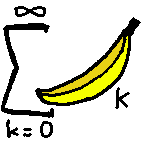diff options
Diffstat (limited to 'client/shaders/nodes_shader/opengl_vertex.glsl')
| -rw-r--r-- | client/shaders/nodes_shader/opengl_vertex.glsl | 94 |
1 files changed, 30 insertions, 64 deletions
diff --git a/client/shaders/nodes_shader/opengl_vertex.glsl b/client/shaders/nodes_shader/opengl_vertex.glsl index 0d8d0a2a5..c68df4a8e 100644 --- a/client/shaders/nodes_shader/opengl_vertex.glsl +++ b/client/shaders/nodes_shader/opengl_vertex.glsl @@ -1,4 +1,3 @@ -uniform mat4 mWorldViewProj; uniform mat4 mWorld; // Color of the light emitted by the sun. @@ -16,12 +15,16 @@ varying vec3 vPosition; // cameraOffset + worldPosition (for large coordinates the limits of float // precision must be considered). varying vec3 worldPosition; - +varying lowp vec4 varColor; +// The centroid keyword ensures that after interpolation the texture coordinates +// lie within the same bounds when MSAA is en- and disabled. +// This fixes the stripes problem with nearest-neighbour textures and MSAA. +#ifdef GL_ES +varying mediump vec2 varTexCoord; +#else +centroid varying vec2 varTexCoord; +#endif varying vec3 eyeVec; -varying vec3 lightVec; -varying vec3 tsEyeVec; -varying vec3 tsLightVec; -varying float area_enable_parallax; // Color of the light emitted by the light sources. const vec3 artificialLight = vec3(1.04, 1.04, 1.04); @@ -85,25 +88,13 @@ float snoise(vec3 p) void main(void) { - gl_TexCoord[0] = gl_MultiTexCoord0; - //TODO: make offset depending on view angle and parallax uv displacement - //thats for textures that doesnt align vertically, like dirt with grass - //gl_TexCoord[0].y += 0.008; - - //Allow parallax/relief mapping only for certain kind of nodes - //Variable is also used to control area of the effect -#if (DRAW_TYPE == NDT_NORMAL || DRAW_TYPE == NDT_LIQUID || DRAW_TYPE == NDT_FLOWINGLIQUID) - area_enable_parallax = 1.0; -#else - area_enable_parallax = 0.0; -#endif - + varTexCoord = inTexCoord0.st; -float disp_x; -float disp_z; + float disp_x; + float disp_z; // OpenGL < 4.3 does not support continued preprocessor lines #if (MATERIAL_TYPE == TILE_MATERIAL_WAVING_LEAVES && ENABLE_WAVING_LEAVES) || (MATERIAL_TYPE == TILE_MATERIAL_WAVING_PLANTS && ENABLE_WAVING_PLANTS) - vec4 pos2 = mWorld * gl_Vertex; + vec4 pos2 = mWorld * inVertexPosition; float tOffset = (pos2.x + pos2.y) * 0.001 + pos2.z * 0.002; disp_x = (smoothTriangleWave(animationTimer * 23.0 + tOffset) + smoothTriangleWave(animationTimer * 11.0 + tOffset)) * 0.4; @@ -112,68 +103,43 @@ float disp_z; smoothTriangleWave(animationTimer * 13.0 + tOffset)) * 0.5; #endif - worldPosition = (mWorld * gl_Vertex).xyz; + worldPosition = (mWorld * inVertexPosition).xyz; // OpenGL < 4.3 does not support continued preprocessor lines #if (MATERIAL_TYPE == TILE_MATERIAL_WAVING_LIQUID_TRANSPARENT || MATERIAL_TYPE == TILE_MATERIAL_WAVING_LIQUID_OPAQUE || MATERIAL_TYPE == TILE_MATERIAL_WAVING_LIQUID_BASIC) && ENABLE_WAVING_WATER // Generate waves with Perlin-type noise. // The constants are calibrated such that they roughly // correspond to the old sine waves. - vec4 pos = gl_Vertex; + vec4 pos = inVertexPosition; vec3 wavePos = worldPosition + cameraOffset; // The waves are slightly compressed along the z-axis to get // wave-fronts along the x-axis. - wavePos.x /= WATER_WAVE_LENGTH * 3; - wavePos.z /= WATER_WAVE_LENGTH * 2; - wavePos.z += animationTimer * WATER_WAVE_SPEED * 10; - pos.y += (snoise(wavePos) - 1) * WATER_WAVE_HEIGHT * 5; + wavePos.x /= WATER_WAVE_LENGTH * 3.0; + wavePos.z /= WATER_WAVE_LENGTH * 2.0; + wavePos.z += animationTimer * WATER_WAVE_SPEED * 10.0; + pos.y += (snoise(wavePos) - 1.0) * WATER_WAVE_HEIGHT * 5.0; gl_Position = mWorldViewProj * pos; #elif MATERIAL_TYPE == TILE_MATERIAL_WAVING_LEAVES && ENABLE_WAVING_LEAVES - vec4 pos = gl_Vertex; + vec4 pos = inVertexPosition; pos.x += disp_x; pos.y += disp_z * 0.1; pos.z += disp_z; gl_Position = mWorldViewProj * pos; #elif MATERIAL_TYPE == TILE_MATERIAL_WAVING_PLANTS && ENABLE_WAVING_PLANTS - vec4 pos = gl_Vertex; - if (gl_TexCoord[0].y < 0.05) { + vec4 pos = inVertexPosition; + if (varTexCoord.y < 0.05) { pos.x += disp_x; pos.z += disp_z; } gl_Position = mWorldViewProj * pos; #else - gl_Position = mWorldViewProj * gl_Vertex; + gl_Position = mWorldViewProj * inVertexPosition; #endif vPosition = gl_Position.xyz; - // Don't generate heightmaps when too far from the eye - float dist = distance (vec3(0.0, 0.0, 0.0), vPosition); - if (dist > 150.0) { - area_enable_parallax = 0.0; - } - - vec3 sunPosition = vec3 (0.0, eyePosition.y * BS + 900.0, 0.0); - - vec3 normal, tangent, binormal; - normal = normalize(gl_NormalMatrix * gl_Normal); - tangent = normalize(gl_NormalMatrix * gl_MultiTexCoord1.xyz); - binormal = normalize(gl_NormalMatrix * gl_MultiTexCoord2.xyz); - - vec3 v; - - lightVec = sunPosition - worldPosition; - v.x = dot(lightVec, tangent); - v.y = dot(lightVec, binormal); - v.z = dot(lightVec, normal); - tsLightVec = normalize (v); - - eyeVec = -(gl_ModelViewMatrix * gl_Vertex).xyz; - v.x = dot(eyeVec, tangent); - v.y = dot(eyeVec, binormal); - v.z = dot(eyeVec, normal); - tsEyeVec = normalize (v); + eyeVec = -(mWorldView * inVertexPosition).xyz; // Calculate color. // Red, green and blue components are pre-multiplied with @@ -182,16 +148,16 @@ float disp_z; // The pre-baked colors are halved to prevent overflow. vec4 color; // The alpha gives the ratio of sunlight in the incoming light. - float nightRatio = 1 - gl_Color.a; - color.rgb = gl_Color.rgb * (gl_Color.a * dayLight.rgb + - nightRatio * artificialLight.rgb) * 2; - color.a = 1; + float nightRatio = 1.0 - inVertexColor.a; + color.rgb = inVertexColor.rgb * (inVertexColor.a * dayLight.rgb + + nightRatio * artificialLight.rgb) * 2.0; + color.a = 1.0; // Emphase blue a bit in darker places // See C++ implementation in mapblock_mesh.cpp final_color_blend() - float brightness = (color.r + color.g + color.b) / 3; + float brightness = (color.r + color.g + color.b) / 3.0; color.b += max(0.0, 0.021 - abs(0.2 * brightness - 0.021) + 0.07 * brightness); - gl_FrontColor = gl_BackColor = clamp(color, 0.0, 1.0); + varColor = clamp(color, 0.0, 1.0); } |
